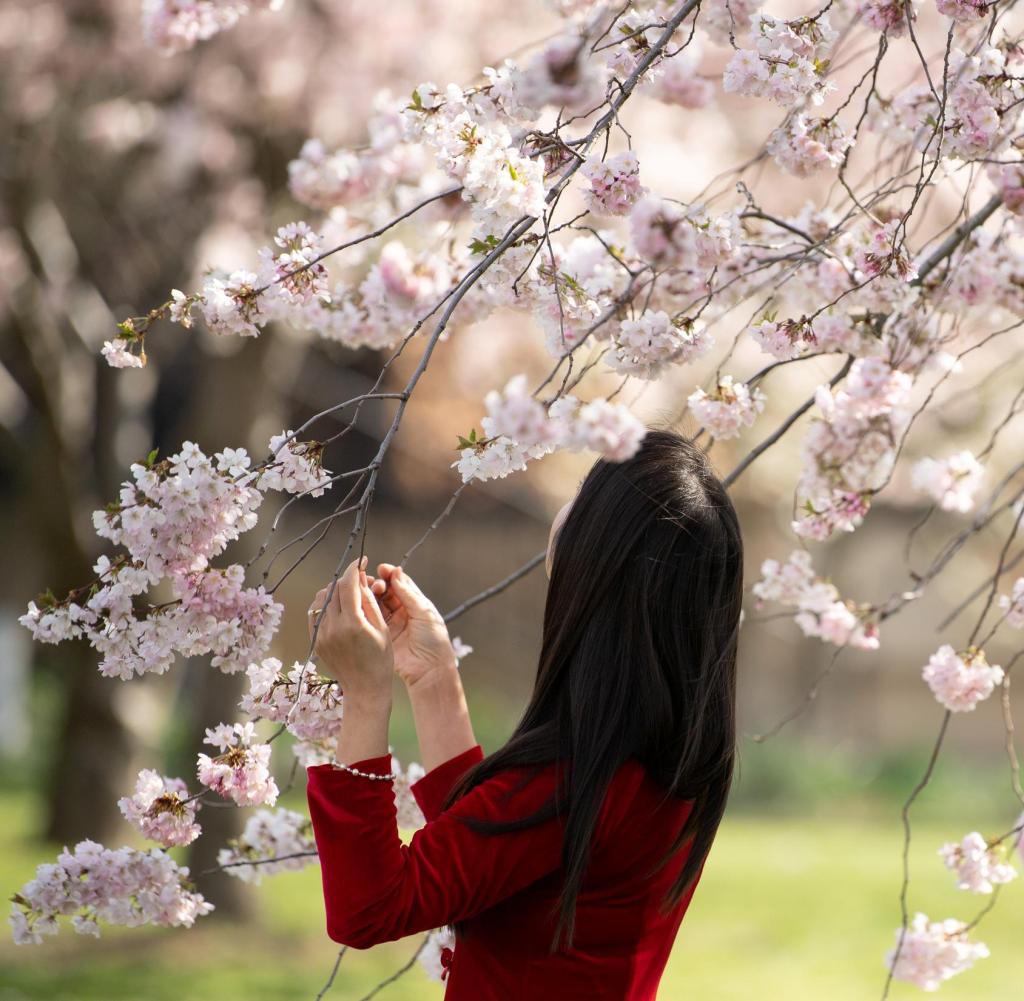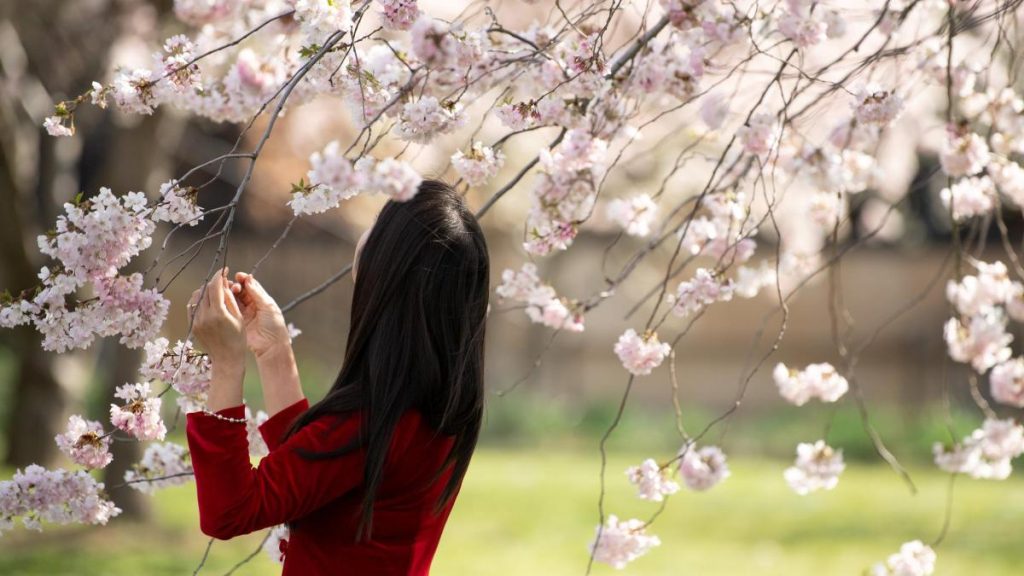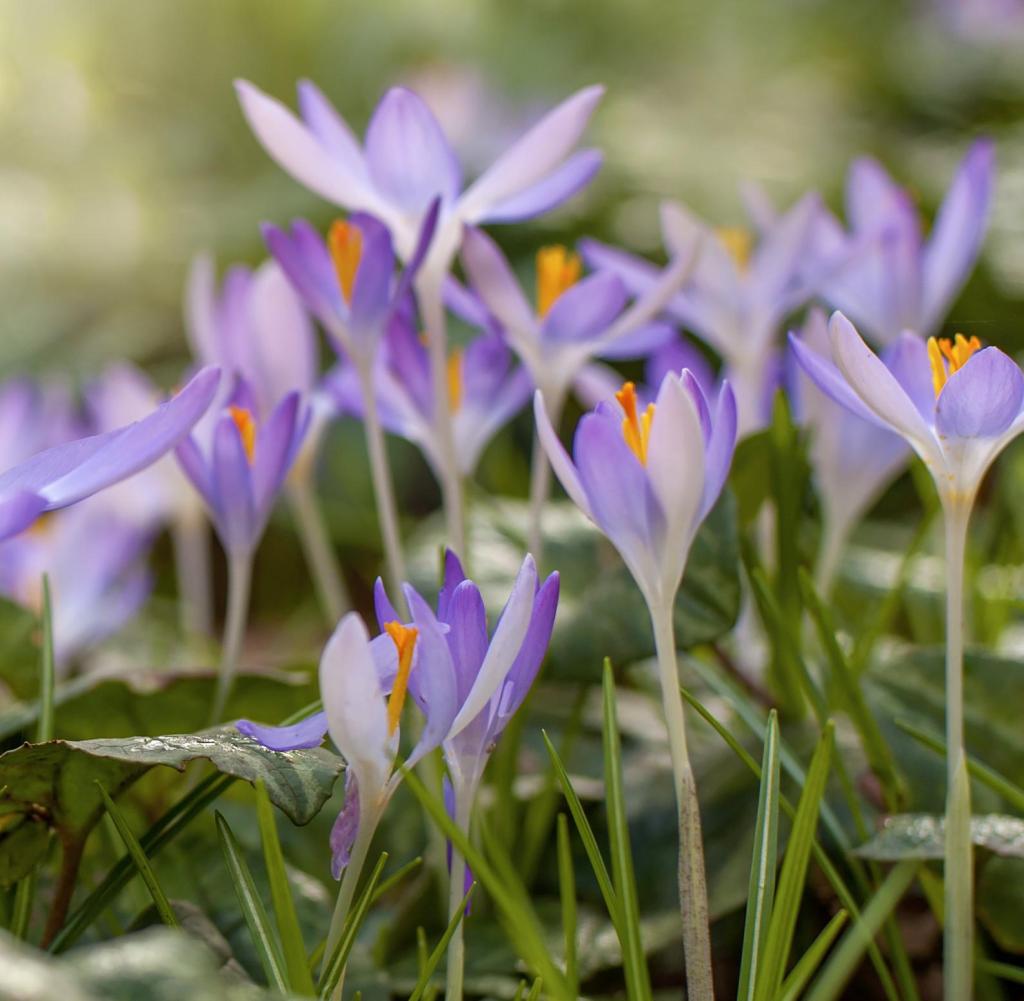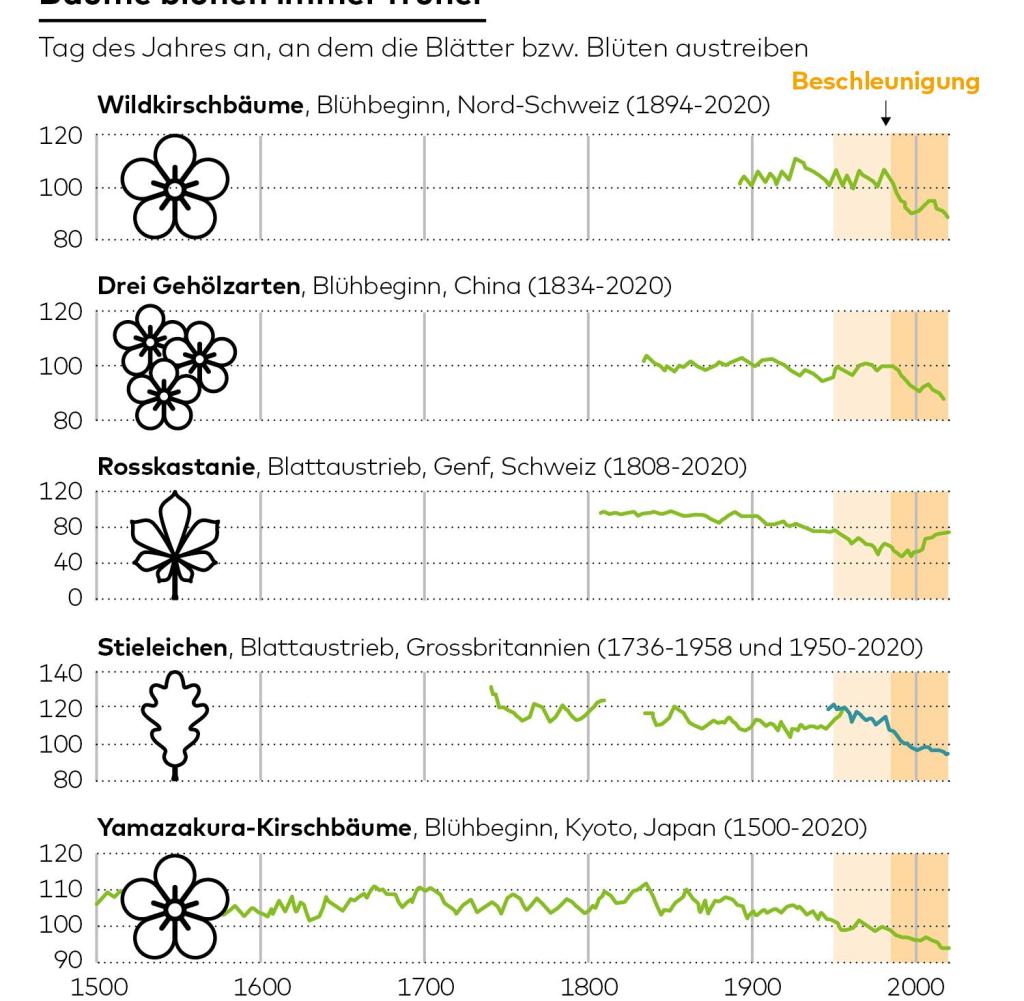Climate change pushes cherry blossom festival into winter


Forward Two Weeks: Cherry Blossom Season in Japan
Source: picture alliance / dpa / dpa-Zentralbild
Japan celebrates the Spring Festival just in time for cherry blossoms—and thus before and before it. Study shows: In the past 500 years, the event has been postponed by two weeks. European time series also show that climate change is leaving its mark.
WAll over the world, trees and shrubs are germinating early and flowering early as a result of climate change. This indicates one An evaluation presented in the journal “Nature”. Of the five longest known spring bud time series of these plants. Since the mid-1980s, all data series have shown an earlier onset of leaf budding and flowering—in parallel with the observed warming in the Northern Hemisphere.
Annually repeated biological processes such as the beginning of flowering of plants or the beginning of the migration of birds are examined under the technical term phenology. He divides the year not into four but into ten seasons – spring, for example, into early spring, first spring and full spring. Data at the onset of characteristic events, some of which have been available for decades or even centuries, allow us to draw conclusions today about the impact of climate change on nature.
The beginning of the cherry blossom season in Kyoto, Japan, can be traced back to 812 in ancient diaries and records – this is the longest phenological time series ever, write scientists working with Jan Vitas of the Swiss Federal Institute of Forestry, Snow and Landscape Research (WSL) in Birmensdorf (Switzerland). This data collection is one of the five analyzed time series.
According to the researchers, records of the Marsham family from southeastern Great Britain represent the longest data set in Europe: its members observed leaves budding in different types of trees from 1736 to 1958, the scientists wrote. On the other hand, since 1950, a British woman has observed the beginning of the bursting of buds of the English oak (Quercus robur), so that the data series extends from Great Britain to the present. In Switzerland, the bud burst of horse chestnut (Aesculus hippocastanum) has been recorded since 1808, and the beginning of flowering of wild cherry (Prunus avium) since 1894. Finally, data from notes on three trees in China since 1834 were available.
Source: Getty Images; Infographic world
Time series analysis showed that the timing of leaf budding and flowering was quite stable over the course of the 19th century. Since the mid-1980s, timing has shifted forward: in China, spring buds began to bloom six days earlier on average over the past 36 years, in Switzerland up to 30 days before 1950. In Japan cherry blossoms bloom for a year, scientists continue Reporting that it began earlier in 2021 than at any time in the 1,200 years before that.
Based on the relationship between temperature and spring buds, it can be assumed that the phenological shift observed in plants is an important bioindicator of global warming. The researchers note that the time series they analyzed do not come from regions where warming has been strongest, such as Central Asia. “It is expected there that the temporal displacement of events in the life cycle of organisms will be more extreme,” Vitas explained.
In contrast to the increase in carbon dioxide in the atmosphere, the beginning of leaf growth and flowering is visible to everyone, and therefore it is concrete evidence that climate change is affecting the ecosystems around us.
In Germany, the German Weather Service (DWD), among others, collects phenological data. According to DWD, hundreds of volunteers observe selected plants and report when trees have budded, started flowering, or changed leaf color. According to the Department for Social Development, the data will primarily be used for studies on climate change. But it’s also important for pollen prediction. Here, too, the phenological data of hazelnut flowers, for example, showed that the number of pollen grains begins earlier and persists longer.

“Total coffee aficionado. Travel buff. Music ninja. Bacon nerd. Beeraholic.”










More Stories
Coral Seeding: Artificial Insemination Makes Coral More Heat Tolerant
Fear, Anger, and Denial: How People Respond to Climate Change – Research
LKH Graz: Using radiation to combat heart arrhythmias